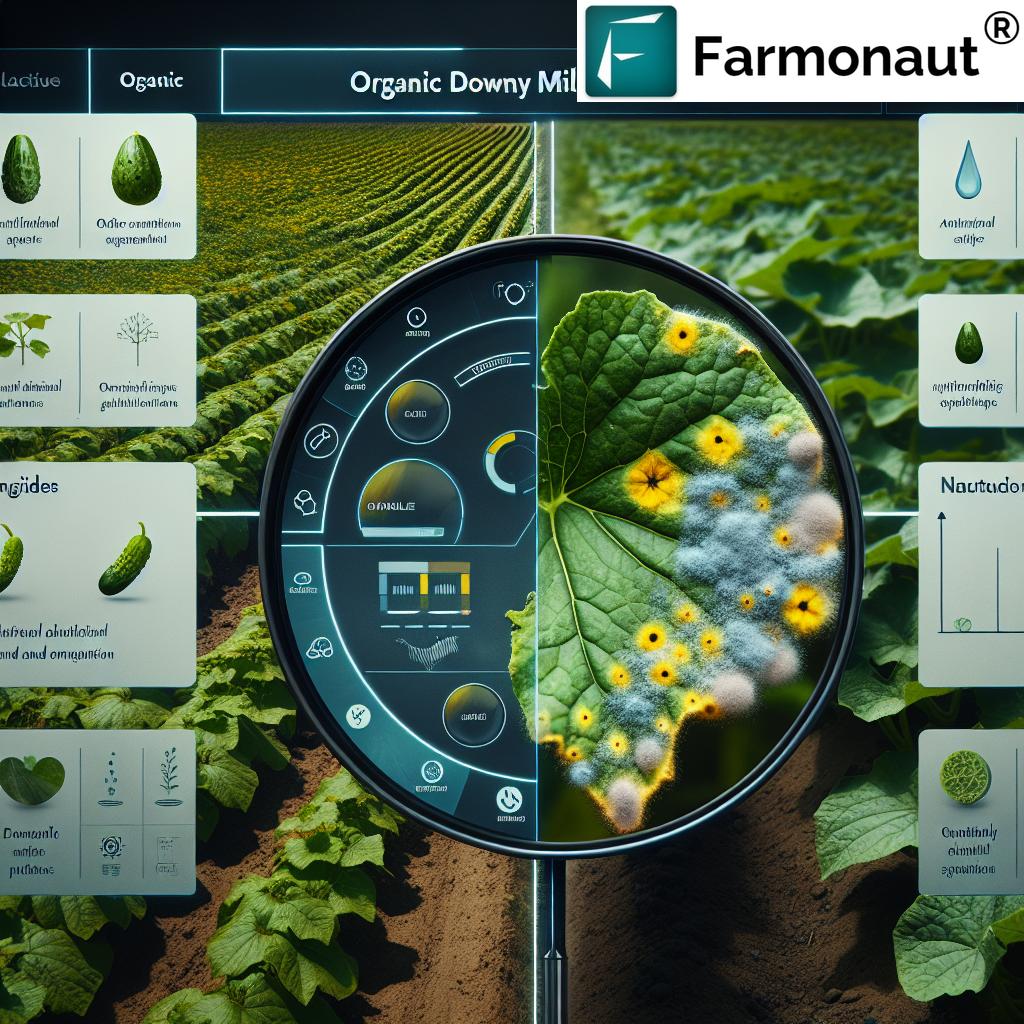
Understanding Magnesium Deficiency in Plants: Symptoms, Causes, and Control Measures
In the world of agriculture, maintaining optimal plant health is crucial for ensuring bountiful harvests and sustainable crop production. Among the various nutrients essential for plant growth, magnesium plays a vital role in numerous physiological processes. However, magnesium deficiency can significantly impact plant health and crop yields. In this comprehensive guide, we’ll delve into the intricate details of magnesium deficiency in plants, exploring its symptoms, causes, and effective control measures.
The Importance of Magnesium in Plant Health
Magnesium is an essential macronutrient for plants, playing a crucial role in various physiological processes. It is a central component of chlorophyll, the pigment responsible for photosynthesis. Additionally, magnesium is involved in enzyme activation, energy transfer, and protein synthesis. Understanding the significance of this nutrient is the first step in addressing potential deficiencies and ensuring optimal plant growth.
Recognizing Magnesium Deficiency Symptoms
Identifying magnesium deficiency in plants requires a keen eye and knowledge of specific symptoms. Here are the key indicators to watch for:
- Chlorosis: One of the most prominent symptoms of magnesium deficiency is chlorosis, which manifests as yellowing of the leaves. This discoloration typically begins in the older leaves and progresses to younger ones as the deficiency worsens.
- Interveinal Chlorosis: A distinctive feature of magnesium deficiency is interveinal chlorosis, where the leaf tissue between the veins turns yellow while the veins remain green. This creates a striking pattern on the leaves.
- Leaf Margins and Tips: In severe cases, the edges and tips of leaves may develop a reddish-purple tint or even become necrotic.
- Stunting: Magnesium-deficient plants often exhibit reduced growth and stunting, resulting in smaller overall plant size and reduced crop yields.

Causes of Magnesium Deficiency in Plants
Understanding the underlying causes of magnesium deficiency is crucial for implementing effective prevention and control strategies. Several factors can contribute to this nutrient imbalance:
- Soil Characteristics:
- Acidic soils with low pH levels can reduce magnesium availability to plants.
- Sandy soils are prone to leaching, which can result in magnesium loss.
- Soils with high levels of competing cations (such as potassium, calcium, or ammonium) can interfere with magnesium uptake.
- Imbalanced Fertilization:
- Excessive application of potassium or calcium fertilizers can lead to magnesium deficiency due to nutrient antagonism.
- Inadequate magnesium supplementation in fertilization programs can result in deficiencies over time.
- Environmental Factors:
- Cold temperatures can reduce magnesium uptake by plants.
- Drought conditions can limit the movement of magnesium in the soil and its absorption by plant roots.
- Plant Characteristics:
- Some plant species and varieties are more susceptible to magnesium deficiency than others.
- High-yielding crops may deplete soil magnesium more rapidly, leading to deficiencies in subsequent growing seasons.
The Impact of Magnesium Deficiency on Crop Health and Yield
Magnesium deficiency can have far-reaching consequences on crop health and productivity. Here’s how this nutrient imbalance affects plants:
- Reduced Photosynthesis: As magnesium is a key component of chlorophyll, its deficiency leads to decreased photosynthetic activity, limiting the plant’s ability to produce energy and grow.
- Impaired Nutrient Transport: Magnesium plays a role in the transport of carbohydrates within the plant. Deficiency can disrupt this process, affecting overall plant nutrition.
- Weakened Plant Structure: Magnesium is involved in cell wall formation. Deficient plants may have weaker stems and be more susceptible to lodging.
- Lower Crop Quality: In fruit-bearing crops, magnesium deficiency can lead to reduced fruit size, poor coloration, and decreased sugar content.
- Increased Susceptibility to Stress: Plants lacking adequate magnesium are often more vulnerable to environmental stresses, including drought, heat, and disease.
Effective Control Measures for Magnesium Deficiency
Addressing magnesium deficiency requires a multi-faceted approach. Here are some effective control measures to consider:
- Soil Testing and Analysis:
- Conduct regular soil tests to monitor magnesium levels and pH.
- Use the results to guide fertilization and soil amendment strategies.
- Soil pH Adjustment:
- In acidic soils, apply lime to raise pH and improve magnesium availability.
- Consider using dolomitic lime, which contains both calcium and magnesium.
- Magnesium Fertilization:
- Apply magnesium-rich fertilizers such as Epsom salt (magnesium sulfate) or potassium magnesium sulfate.
- Incorporate magnesium into regular fertilization programs, especially for high-demand crops.
- Foliar Applications:
- Use foliar sprays containing magnesium for quick correction of deficiency symptoms.
- Apply during critical growth stages or when soil applications may be less effective.
- Balanced Nutrient Management:
- Ensure proper ratios of magnesium to other nutrients, particularly potassium and calcium.
- Avoid excessive application of competing nutrients that may interfere with magnesium uptake.
- Organic Matter Management:
- Incorporate organic matter into the soil to improve nutrient retention and availability.
- Use compost or green manures rich in magnesium to enhance soil fertility.
- Irrigation Management:
- Maintain proper soil moisture to facilitate magnesium uptake by plants.
- Consider fertigation techniques to deliver magnesium directly to the root zone.
Advanced Detection and Monitoring with Farmonaut Satellite System
At Farmonaut, we understand the importance of early detection and precise monitoring of nutrient deficiencies, including magnesium deficiency. Our satellite-based crop health monitoring system offers advanced capabilities for identifying and addressing magnesium deficiency across large agricultural areas. Here’s how our technology compares to traditional methods:
| Method | Detection Speed | Accuracy | Coverage Area | Cost-Effectiveness |
|---|---|---|---|---|
| Traditional Visual Inspection | Slow, labor-intensive | Variable, dependent on expertise | Limited to accessible areas | High labor costs for large areas |
| Farmonaut Satellite System | Rapid, real-time monitoring | High, utilizing multispectral imagery | Large-scale, including remote areas | Highly cost-effective for extensive monitoring |
Our satellite system offers significant advantages in early detection, large-scale monitoring, and precise identification of magnesium-deficient areas for targeted treatment. By leveraging this technology, farmers and agronomists can implement timely and efficient control measures, optimizing resource use and improving crop health.
Crop-Specific Considerations for Magnesium Management
Different crops have varying magnesium requirements and susceptibilities to deficiency. Here’s an overview of magnesium management for some common crop types:
Cereal Crops (Wheat, Corn, Rice)
- Magnesium is crucial for grain filling and yield optimization.
- Apply magnesium fertilizers before planting or as a side-dressing during early growth stages.
- Monitor for interveinal chlorosis in older leaves, particularly during rapid growth phases.
Fruit Trees and Vines
- Magnesium plays a vital role in fruit quality and sugar content.
- Consider foliar applications during fruit development stages.
- Pay attention to magnesium-potassium balance, as excess potassium can induce magnesium deficiency.
Vegetables
- Many vegetable crops are sensitive to magnesium deficiency, particularly tomatoes and peppers.
- Implement regular soil testing and adjust fertilization programs accordingly.
- Use magnesium-rich organic amendments in combination with mineral fertilizers.
Oilseed Crops (Soybeans, Canola)
- Magnesium is essential for oil production and seed quality.
- Apply magnesium fertilizers based on soil test results and crop removal rates.
- Monitor for deficiency symptoms, especially in high-yielding varieties.
Innovative Approaches to Magnesium Deficiency Management
As agricultural technology advances, new approaches to managing magnesium deficiency are emerging. Here are some innovative strategies we’re exploring at Farmonaut:
Precision Agriculture Techniques
Our satellite-based monitoring system allows for precise mapping of magnesium-deficient areas within fields. This enables targeted application of magnesium fertilizers, reducing waste and improving efficiency. Farmers can access this data through our user-friendly app, available for both Android and iOS devices.
AI-Driven Nutrient Management
We’re developing AI algorithms that analyze multiple data points, including satellite imagery, soil tests, and weather patterns, to provide tailored magnesium management recommendations. This system continually learns and improves its suggestions based on real-world results.
Integration with IoT Devices
By combining our satellite data with ground-based IoT sensors, we can provide even more accurate and real-time information on soil magnesium levels and plant health. This integrated approach allows for highly responsive nutrient management strategies.
Blockchain-Based Traceability
For crops where magnesium content is a quality factor, our blockchain traceability solution can track magnesium management practices from field to consumer. This ensures transparency and can add value to products in the marketplace.
Environmental Considerations in Magnesium Management
While addressing magnesium deficiency is crucial for crop health, it’s equally important to consider the environmental impact of magnesium management practices. Here are some key considerations:
Soil Health and Biodiversity
- Balanced magnesium levels contribute to overall soil health and microbial activity.
- Avoid over-application of magnesium, which can disrupt soil structure and nutrient balance.
- Implement crop rotation and cover cropping strategies to naturally improve soil magnesium levels.
Water Quality Protection
- Implement best management practices to prevent magnesium runoff into water bodies.
- Use slow-release magnesium fertilizers to minimize leaching in areas with high rainfall.
- Monitor water quality in nearby streams and lakes as part of a comprehensive nutrient management plan.
Carbon Footprint Considerations
- Optimize magnesium application to reduce the need for energy-intensive fertilizer production.
- Utilize our carbon footprinting tool to track and manage emissions related to magnesium fertilizer use and application.
- Explore local sources of magnesium-rich amendments to reduce transportation-related emissions.
The Role of Farmonaut in Sustainable Magnesium Management
At Farmonaut, we’re committed to helping farmers implement sustainable and effective magnesium management strategies. Our platform offers a range of tools and services designed to optimize nutrient use efficiency and promote environmental stewardship:
- Satellite-Based Crop Monitoring: Our advanced imagery analysis can detect early signs of magnesium deficiency, allowing for timely intervention.
- AI-Powered Advisory System: Our Jeevn AI system provides personalized recommendations for magnesium management based on crop type, soil conditions, and environmental factors.
- Data Integration: We integrate satellite data with weather forecasts, soil tests, and historical yield data to provide comprehensive insights for magnesium management decisions.
- Mobile Access: Farmers can access all these tools through our mobile app, enabling on-the-go decision-making and implementation of magnesium management strategies.
To learn more about how Farmonaut can support your magnesium management efforts, visit our app page or explore our API documentation for custom integrations.
Future Directions in Magnesium Deficiency Research
As we continue to advance our understanding of magnesium deficiency and its management, several areas of research show promise for future innovations:
Genetic Improvement
- Development of crop varieties with improved magnesium uptake efficiency.
- Genetic mapping of magnesium utilization traits for targeted breeding programs.
- Exploration of biofortification strategies to enhance magnesium content in edible crops.
Nanotechnology Applications
- Investigation of nanoparticle-based magnesium fertilizers for enhanced uptake and reduced environmental impact.
- Development of nanosensors for real-time monitoring of plant magnesium status.
Microbiome Interactions
- Study of soil microorganisms that enhance magnesium availability and uptake.
- Development of microbial inoculants to improve magnesium nutrition in crops.
Climate Change Adaptation
- Research on magnesium nutrition under changing climate conditions, including drought and heat stress.
- Modeling of long-term magnesium dynamics in agricultural systems under various climate scenarios.
At Farmonaut, we’re actively collaborating with research institutions and agricultural experts to stay at the forefront of these developments. Our goal is to continuously improve our platform to provide farmers with the most advanced and effective tools for magnesium management.
Conclusion: Empowering Farmers with Knowledge and Technology
Magnesium deficiency is a complex issue that requires a multifaceted approach to management. By understanding the symptoms, causes, and control measures, farmers can take proactive steps to ensure optimal plant health and crop productivity. At Farmonaut, we’re dedicated to providing the tools and insights needed to address magnesium deficiency effectively and sustainably.
Our satellite-based monitoring system, AI-driven advisory services, and integrated data platform offer unprecedented capabilities for managing magnesium nutrition across diverse agricultural landscapes. By combining cutting-edge technology with agronomic expertise, we’re empowering farmers to make informed decisions that optimize yields, reduce environmental impact, and promote long-term soil health.
As we look to the future, the integration of advanced technologies like AI, blockchain, and IoT with traditional agricultural knowledge will be key to addressing the challenges of magnesium deficiency and other nutrient management issues. At Farmonaut, we’re committed to leading this integration, continually innovating to provide farmers with the most effective tools for sustainable and productive agriculture.
To learn more about how Farmonaut can support your farm’s magnesium management strategy, explore our services or contact our team of agricultural experts. Together, we can cultivate healthier crops, more resilient farming systems, and a more sustainable future for agriculture.
FAQs About Magnesium Deficiency in Plants
- Q: How quickly can magnesium deficiency symptoms appear in plants?
A: Symptoms can appear within a few weeks of magnesium becoming limited, but the exact timing depends on the plant species, growth stage, and severity of the deficiency. - Q: Can excess magnesium be harmful to plants?
A: Yes, while rare, excess magnesium can interfere with the uptake of other nutrients, particularly potassium and calcium. It’s important to maintain a balanced nutrient profile in the soil. - Q: Are some crops more susceptible to magnesium deficiency than others?
A: Yes, crops like potatoes, tomatoes, citrus fruits, and some grain crops are particularly sensitive to magnesium deficiency. However, susceptibility can vary based on soil conditions and management practices. - Q: How does soil pH affect magnesium availability?
A: Magnesium availability is generally highest in soils with a pH between 6.0 and 8.5. In acidic soils (pH < 5.5), magnesium can become less available to plants. - Q: Can organic farming methods effectively address magnesium deficiency?
A: Yes, organic methods such as applying compost, using magnesium-rich organic amendments, and implementing crop rotations can effectively manage magnesium levels in soil. - Q: How does Farmonaut’s satellite system detect magnesium deficiency?
A: Our system uses multispectral imagery to analyze plant health indicators, including chlorophyll content and leaf coloration, which can signal magnesium deficiency when combined with other data points. - Q: Is foliar application of magnesium more effective than soil application?
A: Foliar application can provide a quick response to acute deficiency symptoms, but soil application is generally more effective for long-term magnesium management. - Q: How often should I test my soil for magnesium levels?
A: We recommend annual soil testing, ideally before the growing season, to monitor magnesium levels and adjust fertilization plans accordingly. - Q: Can water stress exacerbate magnesium deficiency?
A: Yes, drought conditions can limit magnesium uptake by reducing its mobility in the soil and impairing root function. Proper irrigation management is crucial for maintaining adequate magnesium nutrition. - Q: How can I access Farmonaut’s magnesium management tools?
A: You can access our tools through our mobile app or web platform. Visit our app page to get started, or explore our API documentation for custom integrations.













